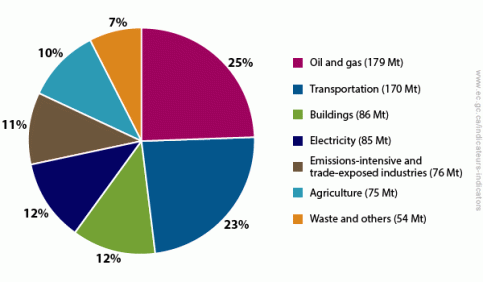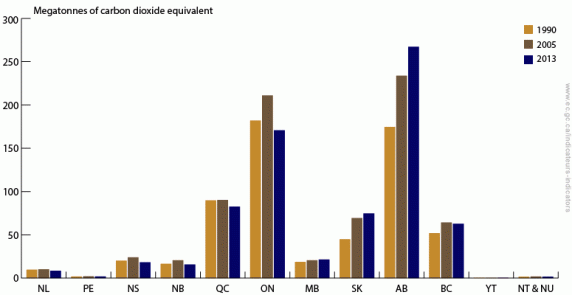Okay, I’ll admit it; I’m not deeply delved into politics as I should be.
It’s an embarrassing confession, because as someone who wants to be a well-informed member of Canadian society, I’m only slightly aware of what’s happening behind the political curtain in our True North. As a self-proclaimed science nut, I’m likely to talk about the world’s first head transplant (I brought that up twice last week!) before bringing up the upcoming elections in Canada.
But even if you’re scientifically inclined, it doesn’t hurt to make an effort to understand your nation’s politics. It’s important to gauge how your country’s running and what it’s running on.
In Canada, the citizen’s vote is–in theory–a minor power to change the way his/her country is running, by changing the big boss in charge every few years or so.
Pro-Environment: Protecting & Patching Up the True North
AS PRIME MINISTER, TOM WILL WORK TO KICKSTART RENEWABLE ENERGY PRODUCTION AND DRIVE DOWN CLIMATE-CHANGING EMISSIONS. HE’LL MAKE BIG POLLUTERS PAY TO CLEAN UP THEIR MESS.. –NEW DEMOCRATIC PARTY’S WEBSITE
We don’t need another leader to tell us that the environment is important to protect.
Water, Water Everywhere…in Canada? Monitoring Our Freshwaters
A LIBERAL GOVERNMENT WILL..INCREASE THE AMOUNT OF CANADA’S PROTECTED MARINE AND COASTAL AREAS FROM 1.3 PERCENT TO 5 PERCENT BY 2017, AND 10 PERCENT BY 2020…–LIBERAL PARTY’S WEBSITE
In the book Eau Canada: The Future of Canada’s Water, John B. Sprague tells us that Canadians are under a false pretence to believe our True North is abundant in water [1].
Although our large land mass allows for the formation of plentiful freshwater bodies, Canada harbours only 7% of the world’s renewable freshwater. The rest of our fresh water is contained in glaciers and underground aquifers, while most of it flows back into the Arctic seas and the Hudson Bay [1, 2].
Though limited in abundance, a great Canadian government should focus some energy on monitoring our freshwater quality. Snooping around the Environment Canada website, one can find data for freshwater quality in Canadian rivers between 2003 to 2012 [3, 4].

Image credit via Environment Canada
The presented data paint an obvious picture: while some freshwater regions have considerably good water quality, there are those who’s quality is less-than-ideal, classified as either fair, marginal, or poor. According to 2010-2012 data, poor freshwater quality can be found in the drainage basins of the Great Lakes and St. Lawrence regions, where a large chunk of Canadian population lies [5].
Image credit via Environment Canada
Methinks that with a new government, this monitoring project should resume for the upcoming years. How has the water quality changed over some odd 3 years, and how will it do so in the coming future? If we’re leaning towards an economically booming nation, how clean will our waters stay, what with bustling human activity?
According to a June 2015 report by Environment Canada, the objective of this project was to assess freshwater suitability for aquatic life [3]. Yet, these freshwaters–and the organisms that inhabit them–affect us too.
Can we observe patterns of our pollutant dumping into these freshwater systems, or determine a ‘primary source’ of these pollutants? How will the freshwater quality change over time, if it does at all?
By continuing this research initiative–while tweaking it–we can answer some of these questions, which may help us form new policies related to freshwaters, like dumping regulations or habitat preservation.
Lowering Greenhouse Gas Emissions (Surprise, Suprise)
OUR PLAN IS TO MOVE TO THE VIRTUAL ELIMINATION OF FOSSIL FUEL USE IN CANADA BY MID-CENTURY. OUR SHORT-TERM TARGET IS 40 PERCENT BELOW 2005 LEVELS BY 2025, WHILE WE ARE CALLING FOR 80 PERCENT REDUCTIONS BELOW 1990 LEVELS BY 2050…–GREEN PARTY’S WEBSITE
In May 2015, the Environment Minister Leona Agluukaq announced that Canada is targeting to reduce its greenhouse gas (GHG) emissions by 30% below 2005 values by the year 2030 under the Harper government. This is rather an “ambitious” target for our nation, especially after we withdrew from the Kyoto Protocol in 2011 when we would have failed to reduce 6% of our GHG emissions of 1990 levels by 2012.
The Globe and Mail’s Jeffrey Simpson even expresses that while this goal is in fact unambitious, it’s unachievable for us anyway. It’s unachievable because according to Simpson, the Harper government has failed to make explicit claims on regulating bitumen, an industry that produces the most GHG emissions in the country.
Maybe Simpson is right. Between 2005 to 2012, the nation managed to reduce GHG emissions by 5.1%, while the economy “grew by 10.9%” anyway. This is an achievement no doubt, but when you stack it beside our newly proposed goal, it’s rather a humble victory.

Image credit via Environment Canada.
Perhaps the new government can approach GHG and/or carbon emissions by passing on the weight of this responsibility to the provincial governments. Although different industrial sectors in Canada contribute differently to GHG emissions, provinces also have unique contributions as well.
If we’re still ambitious about cutting our GHG emissions by 30%, the Canadian government can initially compare GHG emissions between each province/territory, provide each region with a reduction goal, and pass on this responsibility to the appropriate provincial government.
The provincial government can then assess which sectors in the province are emitting the most GHGs, and decide which industries should cut down their emissions most. Municipal governments can also share this responsibility, organizing programs and local laws to help the province cut down on emissions even more.
In short, reducing GHGs is a group effort, and requires all levels of government to participate in this goal. In Alberta, it may be more effective to reduce GHG emissions in the oil and gas industry, while in Ontario, GHG cuts can be implemented more in the waste, building, and/or transportation industries.

Image credit via Environment Canada. This figure illustrates the amount of carbon dioxide equivalent emissions (i.e. GHG emissions of the non-carbon dioxide variety that cause a CO2-like greenhouse gas effect) for each Canadian province and territory in 1990, 2005, and 2013.
In an ideal world, the best solution is one that is sustainable, yet capable of making the Canadian economy a prosperous one. In our economy, perhaps profitability comes first before environmental protection or sustainable development.
Our new federal government can work on creating incentive programs for businesses that are capable of large-scale GHG emissions. Perhaps it’d be interesting to organize a nation-wide ‘green olympics’, where businesses that emit the least amount of GHG emissions win a monetary prize, while the losers will be forced to pay a sort of carbon tax.
Alternatively, our new federal government can also partly fund businesses if they decide to facilitate their buildings and business using sustainable practices, such as renewable energies, recycling programs, and the likes.
Lastly, most political parties I’ve read about are all for increasing the production and usage of renewable energies.
That said, the federal government may be interested in investing some funding money into research initiatives related to biotechnology, sustainable energy development, and climate/environmental science. This means more funding in our government laboratories, industrial research benches, and possibly post-secondary institutions.
Embracing the Inevitable, Tackling the Unpredictable: What the Political Parties Say
THE CONSERVATIVE PARTY BELIEVES THAT RESPONSIBLE EXPLORATION, DEVELOPMENT, CONSERVATION AND RENEWAL OF OUR ENVIRONMENT ARE VITAL TO OUR CONTINUED WELL-BEING AS A NATION… –CONSERVATIVE’S POLICY DECLARATION
Two things are absolutely true: Firstly, political leaders may talk a big game, but they don’t follow through with their promises. This may be related to the second fact that running for government is no easy task. Last time I checked, running a few million-person country isn’t exactly menial work.
But if you’re really pro-environment and want to vote on October 19th, who’re you looking out for and which candidate is right for you (and the environment!)?
So if you’re a Canadian reader, and you’re debating whether to vote on October 19th, I strongly encourage you to do so. A handful of votes can change the tide in any political party. Whether you’d like to believe it or not, your vote counts.
**Please note that this article reflects the opinion of the author (Renee a.k.a. ‘rchemtecks’). Please read our disclaimers page for more info. Featured image via Pixabay.com.
Renee has received her B.Sc. in Honours Life Sciences at McMaster University. She loves educating others about different topics in science, and has developed a passion for scientific outreach. When she’s not writing articles for Hemtecks, she’s either volunteering or checking her social media accounts every 20 minutes. Along with Tiffany (Tianhemtecks), she also facilitates the blog’s Facebook page.

